This Could Be the Moment Putin Wins the War in Ukraine
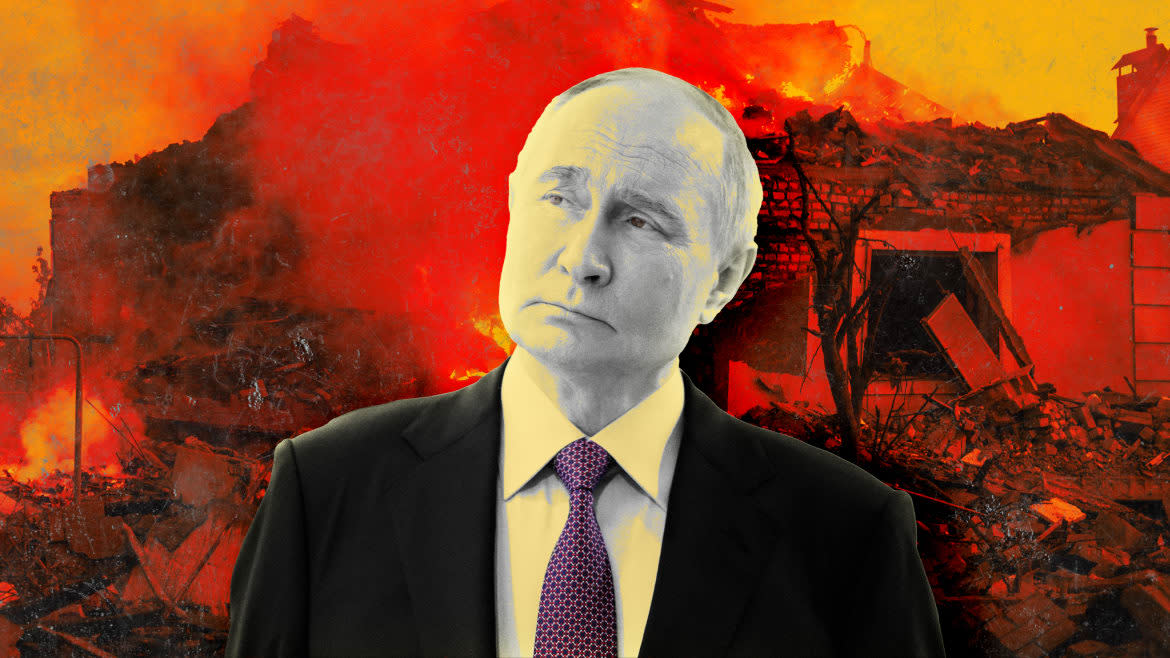
KHARKIV—Russia’s sudden ground invasion of the Kharkiv region came as a shock to the country that has been plagued by the two-year-long conflict. For well over a year, Ukraine had managed to keep the Kremlin’s military from crossing its northern border between Kharkiv and Russia after it launched its 2022 summer counteroffensive, which saw Kyiv reclaim masses of land in a short period of time.
Since Russian forces retreated, residents of the Kharkiv region had found some sense of normal amidst the constant air raid sirens and frequent attacks in Ukraine’s second biggest city. On May 10, that all came crumbling down, and now Kharkiv’s residents, some of whom already felt that Ukraine’s defeat of Russia was unlikely, are once more living in a frontline town. Ukraine has reached a turning point and it’s unclear if a Russian victory can still be thwarted.
A Steadfast Patriotism
First, the good news. Over the last two years, Ukraine has remained strong in the face of its adversaries. Early predictions from journalists and scholars claimed that Kyiv would fall in a matter of days and that Russia would swiftly take control of all of Ukraine.
In the beginning, the future of Ukraine seemed bleak as Russia occupied cities like Kherson and Mariupol, and the streets of major cities like Kyiv, Kharkiv, and Kramatorsk were filled with battles.
But Kyiv’s military warded off advances across much of the country, and central and western Ukraine have become relative safe zones. Patriotism remains high in much of the country and Ukrainians continue to raise money for the armed forces with constant crowdfunding efforts ever-present on social media. Masses of Ukrainians continue to support the country’s fight for freedom. The effort from volunteers has been extraordinary. The Hospitallers, a Ukrainian paramedic volunteer group, for example, risk their lives on the frontlines every day to provide life-saving medical care.
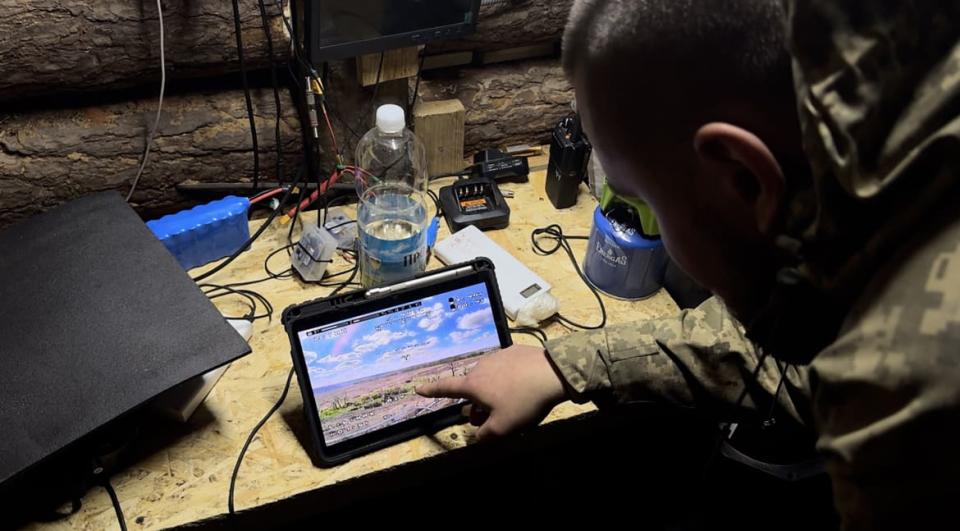
A Ukrainian soldier operating a drone from a trench.
Some of the professional units have become household names or national heroes and symbols of freedom. One of these is Achilles, a drone battalion in the 92nd brigade that is so exclusive it only accepts the very best soldiers from its application process. On the Ukrainian Railways, an ad for Achilles shows its commander, Yuri Fedorenko, standing in an open field as he directs drones in the direction of Russian military positions. The ad ends with the drones landing behind a set of trees, seemingly hitting their intended target, and “ACHILLES” in yellow bolded words closing the scene.
Putin’s Surprise Attack Leaves Ukraine in ‘Incredibly Difficult’ Position
The Daily Beast visited various Achilles locations, including a drone warehouse in Kostyantynivka. A platoon sergeant major who goes by the call sign “Zub” said that volunteers, and civilians who work with Ukraine’s Ministry of Digital Transformation are spending their own money to buy drones. The drones, which the military goes through at a rapid pace, can cost anywhere from $15,000 to over $30,000. Zub says they have really relied on those individual donors who supplied the brigades with drones but he is worried people will no longer be able to afford to help.
“It’s already the third year of the war. Let’s be honest. Our economy is falling. People who were very active at the beginning have already exhausted their resources. And to make enough money to help us, people are getting less and less,” he added.
Now that the U.S. has ended its hiatus on supplying aid to Ukraine after passing a deal worth $61 billion, there’s hope that the U.S. may send more drones directly. “[If] America will supply us with drones, then maybe we will have more opportunities,” Zub said.
Running Out of Men
The victory on Capitol Hill was met with cheers throughout Ukraine, but it made some feel frustrated that the war would continue even longer.
Many of the men fighting on the front are exhausted , and even with new weapons, they fear for how long they can continue to fight before they end up dead or severely wounded. Morale is at its lowest ebb.
In Kharkiv, one soldier named Leo told The Daily Beast that many of the men fighting alongside him on the new front in the region are much older than him and their health is in a fragile state. “Everyone is exhausted, no one is ready to fight. Right now, we have 20 people left in the company, maybe even less. Of those, half still need medical help, which they [government] don’t want to give us,” he said.
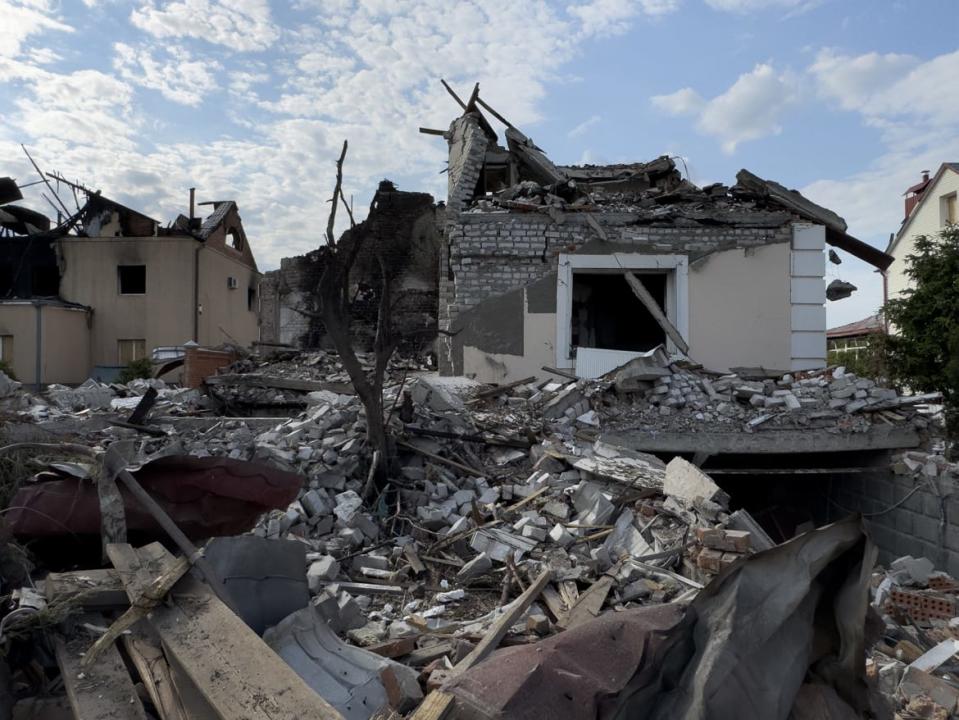
Destroyed homes in Kharkiv.
Leo was sitting at an indoor market in Kharkiv at 8:30 in the morning as we spoke. The market was quiet as many of Kharkiv’s residents had not yet begun their day, but the vicinity was scattered with soldiers who drank cups of coffee with their friends or smoked cigarettes outside. He had just dropped wounded soldiers at a nearby hospital and said he was “hanging out” in Kharkiv for the time being.
Leo sat hunched over a steaming bowl of borscht, a Ukrainian soup, as he spoke. He fears he has a concussion after a mine detonated near him. Right now, he believes the battles in the Kharkiv region are “Stationary. [Russians] are polishing off everything with artillery on those positions. We were first on the closest positions. Then we were pushed back a bit, given a few days to rest, but they are also shelling there, but not as often. It’s all day long, shooting, all day long, artillery.”
“I just want to go home,” said Leo.
The country’s military is facing constant setbacks as Russia’s military advances. Ukraine is having a hard time recruiting new soldiers, and a poll by InfoSapiens, a Ukrainian research agency, stated that just 35 percent of men not already fighting are willing to serve. Ukraine’s military has had to resort to increasingly unpopular measures to ensure that there are still able bodies fighting on the frontlines.
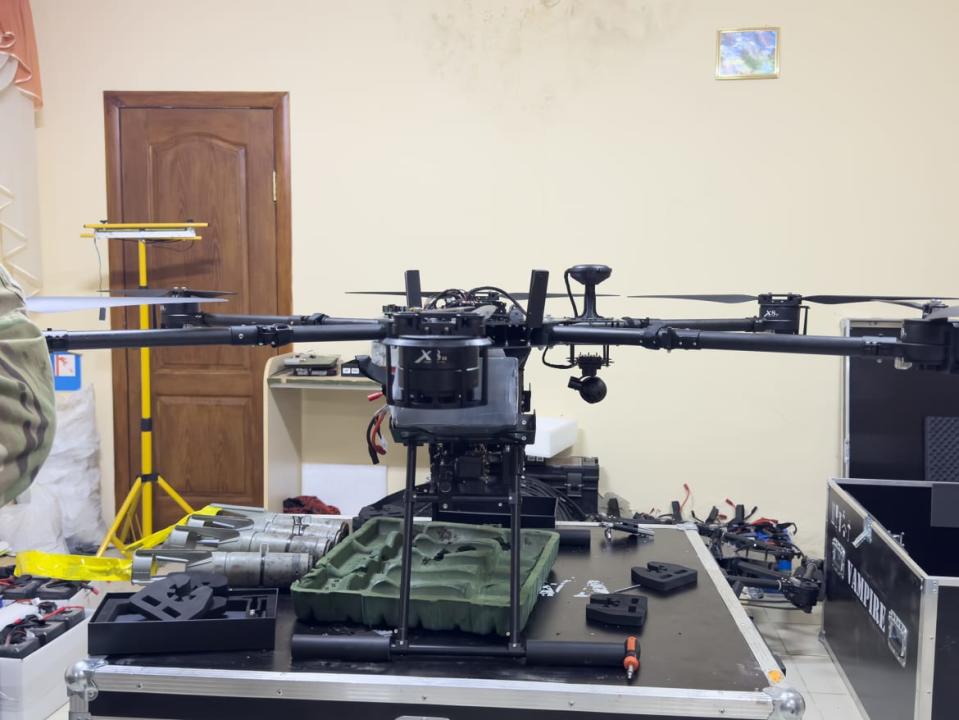
A Ukrainian drone.
Men from the age of 18 to 60 have been, for the most part, unable to leave the country, part of a martial law mandate that has been in place since the early days of the war. The restriction applies to all men, regardless of whether they have illnesses or disabilities that prohibit them from joining the military. Over the last two years, The Daily Beast has spoken to dozens who believe that the law is unfair and has led many to feel depressed and trapped in the country—women can freely come and go.
On April 2, Zelensky passed a law lowering the military draft age from 27 to 25, a move that was unpopular across Ukraine. In recent weeks, Zelensky’s government has also tightened restrictions on men living abroad in the hopes that they will return home; granted parole to prisoners with less than three years left on their sentence if they join the military; and enforced large mobilization efforts.
On Sunday, major mobilization changes significantly impacted Ukrainian men, especially those living near the frontlines. All men aged 18 to 60 must have military documents with them at all times and present them at any request from law enforcement. Men of fighting age must register their address, phone number, email address, and all other personal data within 60 days of the new law. Ukrainian civilians must relinquish their vehicles to the military if necessary for up to one month, and some men fear that in the near future they may not be able to freely leave their region.
A Kharkiv resident named Vladimir, 46, told The Daily Beast that he is angry about the new restrictions on his freedom. “First, you need to get documents, and there’s no guarantee that I won’t be immediately drafted when I go to the military [office], and then I will have to report for duty and fight in a month.”
Vladimir is the father of two children, one is 11 and the other is two. The youngest has never known a peaceful Ukraine, because he was born during the war. Although he is too young to understand why his country has been invaded, Vladimir said “lately he has started running to the corridor during explosions.”
Vladimir and his family want to move somewhere safer, away from the new Kharkiv frontlines. He and his wife had planned to go to Sumy, another border town nearly a three hour’s drive away from Kharkiv, but now the future of it too remains unknown. The couple are considering moving to Dnirpo, further in the east towards Donetsk, but Vladimir said “There’s no guarantee that they won’t tell you to serve there as well.”
Can Ukraine Fight Them Off Again?
As Ukraine’s military desperately tries to find new recruits, it is also facing an unprecedented Russian counter-offensive for which it had not been properly prepared. For weeks leading up to Russia’s counteroffensive, Kremlin officials, propaganda media outlets, and think tanks like the Institute for The Study of War [ISW] have said that Russia intended to seize Kharkiv city to create a “sanitary zone” in Ukraine, which they claimed would “protect Russian border settlements from Ukrainian strikes,” according to the ISW.
Moscow launched its offensive with more than 30,000 troops, and Zelensky said on Friday that Russian forces may advance as much as six miles into the Kharkiv region in just one week. It’s the fastest progress seen since the early days of the war and there are some analysts who fear that Ukraine won’t be able to hold back the might of the Russian army this time around, especially if they attack on other fronts at the same time as they are pushing into Kharkiv.
Sanctions Be Damned, Putin’s War Machine Is Still Powered by U.S. Parts
Last month, Oleksandr Pivnenko, the commander of Ukraine’s National Guard, told the Ukrainian outlet Liga.net that Russia would need years to occupy Kharkiv city, but they are already making significant gains. Over 7,500 Ukrainians have had to evacuate from their homes in the border region of Kharkiv, according to Governor Oleh Syniehubov. Fighting is especially heavy in Vovchansk, a city 46 miles from the center of Kharkiv. Serhii Bolvino, the head of the investigative department of the police of Kharkiv Oblast, said that Russian soldiers in Vovchansk have taken captive up to 40 Ukrainian civilians, mostly older citizens, and are now using them as human shields.
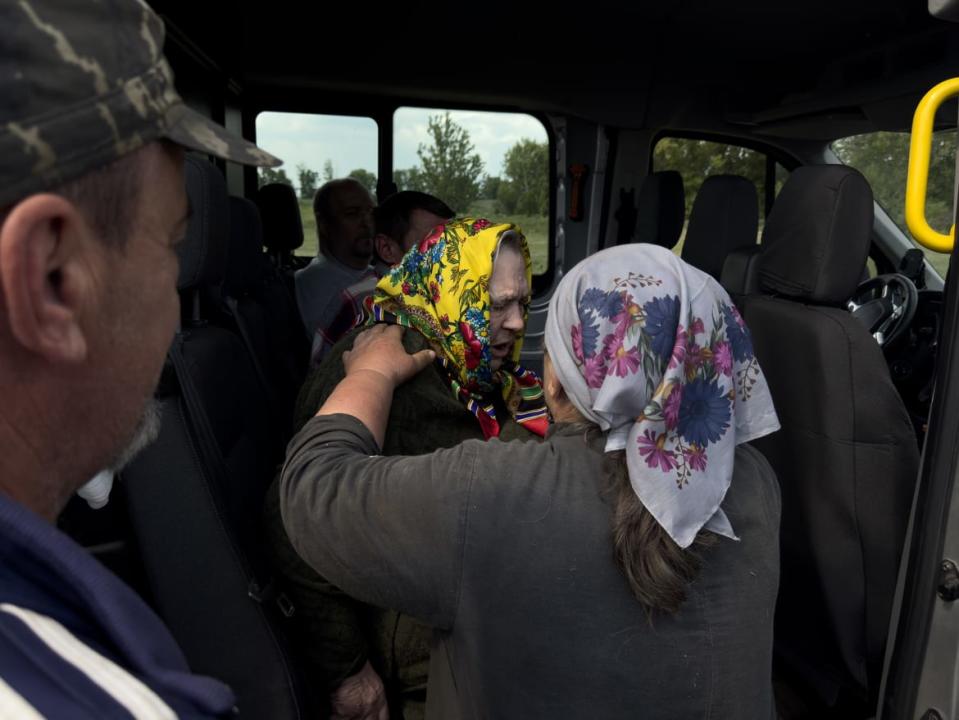
Elderly women evacuating.
Kyiv said that 60 percent of Vovchansk is still under their control, but videos show that the city has been nearly leveled. The Daily Beast met with half a dozen refugees from Vovchansk since May 10, and they recounted the horrors of the second invasion. Most of them had already lived under Russian occupation in 2022. When Russia first took the city, the refugees all said they came more or less calmly, without targeting civilians or aiming to destroy all signs of life. This time, however, they said the Russians have been malicious in their fighting, showing little care of who lives and who dies, and wreaking havoc on a city that has been terrorized by the Kremlin for over two years.
While residents from the front lines are fleeing to Kharkiv, many who lived in the city center are now leaving for safer regions as the counteroffensive looms over Ukraine’s second-largest city. Should the entire oblast fall, it could set up an opportunity for Russia to take control of all of eastern Ukraine, something it has been attempting for ten years. Should Russia effectively split the country in two, it could be all but impossible for Kyiv to regain control of its entire territory, not least since we could be a matter of months away from the return of President Trump, who is likely to push for a negotiated settlement at the earliest opportunity. If Russia is able to make swift gains before the November elections in the U.S. it would be negotiating from a hugely strengthened position.
At the beginning of May, Kharkiv was primarily made up of civilians, but over the last two weeks, the city has been flooded with soldiers. The number of troops in the region could mean that Russia will not be able to break through into the city without a massive fight, but it remains unclear how the deployment of troops to this new front will affect Ukraine’s strength in Donbas or on the southern front, where the majority of soldiers have been stationed throughout the war.
Alexander, 33, said that he and his wife are trying to find an alternative of where they can go that is away from Kharkiv. Alexander’s wife and his young child could leave Ukraine and go somewhere abroad, far from the war. But, he said his wife refuses to leave him and now they are searching for another region of Ukraine to move to.
In the past, Alexander had used a certificate from a doctor that showed he was too ill to join the army, but now he says it no longer works. He is afraid of being drafted into the military and he is afraid Kharkiv could be seized by Russia. “This is my land. Everything is possible. They said there wouldn’t be a war. Well, it started,” he said.“I don’t want to take up arms. I don’t want to kill anyone. I just want to live.”
Alexander’s point is entirely understandable, but Ukraine desperately needs more people to fight or thousands more will die as Putin drives this new offensive deep into the country.
Get the Daily Beast's biggest scoops and scandals delivered right to your inbox. Sign up now.
Stay informed and gain unlimited access to the Daily Beast's unmatched reporting. Subscribe now.


